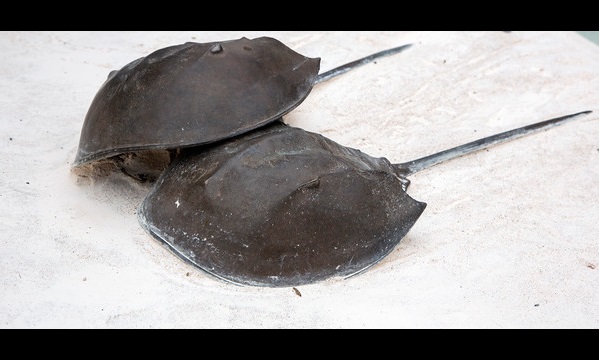Horseshoe crab
Family Limulidae

Fascinating Facts
- They are not crabs; their closest relatives are actually arachnids!
- Their blood is literally blue and it is harvested (without harming the crabs) to be used in blood testing, cancer research, and more.
- Their spike-shaped tail, or telson, functions as a tool for digging in sand and a lever if the animal finds itself upside down.
- Horseshoe crabs have 10 eyes located all over their bodies, with the largest rods and cones of any known animal. Even so, they can only sense light and locate mates with them.
- Many shorebirds and fish depend on horseshoe crab eggs for food.
Habitat/Diet
Horseshoe crabs are found on warm coastlines and are nocturnal omnivorous scavengers, feeding upon small bivalves, mollusks, worms, dead fish and algae. Their legs are covered with thick bristles that point inward and grind food toward their mouth, located at the center of their legs, as they walk.
Status in the Wild
Most species listed as Near Threatened or Data Deficient – visit The IUCN’s Red List of Threatened Species for more information.
Range
East and Southeast Asia, American Atlantic coast, and the Gulf of Mexico
Location in the Zoo
Invertebrates Zone of the Sculpture Learning Plaza
